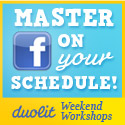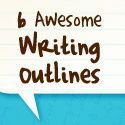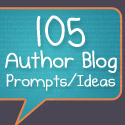Think back to when you were a teenager, prowling the malls of the suburbs on a Saturday afternoon with your friends. Remember how you felt when you stepped into certain stores that carried the “it” fashion of the moment—Nike sneakers, Bongo jeans, Gap sweaters, Member’s Only jackets, etc. Do you recall that oh-so-powerful feeling of “Gotta Have It!” taking over? Why was that? What made those sweaters, jackets, shoes and jeans so different from the ones you could have purchased in any other store for a lot less money?
It’s the brand.
When you travel, do you have a hotel preference? In general, I prefer Hampton Inns to Holiday Inns, Holiday Inns to Sleep Inns and I’d rather sleep in my car than stay at a Motel 6—even if they will leave the light on for me. But why is that? Most hotel rooms are almost exactly the same—two beds, white sheets, TV, bathroom, and a door. Who cares what’s on the marquee out front if you got a good price, right? Wrong.
It’s the brand.
Corporations spend billions of dollars every year to make sure that you want to buy their brand over the competition’s product regardless of the price difference. It’s not just about the image, it’s about the feelings, attributes, awareness and expectations that you associate with that brand. Even among companies that have powerful branding, some are simply better in our minds than others.
So what in the world is a brand?
If you Google the term “brand” you’ll get a hodgepodge of definitions and terms a mile long from the hot irons used to mark cattle to a novel-length explanation of a marketing brand and all of its related terms (brand image, brand awareness, brand experience, etc.). Here’s my short and sweet definition of a brand:
A brand is a corporate image that evokes a consumer response.
It’s that easy. You decide what you want people to feel and then you craft an image that will represent those feelings as best as possible. I think the biggest misconception people have about branding is that it’s only about design. But it’s the feelings and associations made with the design that are really the key to branding. And the real work is in figuring out how to craft your image to bring forward those emotions and memories.
To help you put together your brand, I’ve come up with a list of the five critical elements of a good brand.
1) Writing Style: Is your work often humorous in nature, or is it more about the thrill of a good mystery? Do you write with poetic prose or more of a common vernacular? These are all things you should take into account when considering your brand.
Example: Anita Shreve is a favorite author of mine. She writes gripping stories with an element of mystery, but geared more toward the personal stories of her characters (who are typically females in their thirties and forties). As a result, her branding has a simple, yet elegant with a dash of romance.
2) Geographical Elements: Do many of your books take place in the same area? Whether it’s a small area (like a specific town) or a larger area (like an entire country), these are important attributes to consider when preparing your brand. There’s a huge difference in having an international appeal and having a regional appeal.
Example: Carl Hiaasen is another of my favorites, especially because he writes such brilliantly colorful stories about my home state. Since most of his books take place in South Florida, his brand is about bright colors and clean fonts which are typically associated with Miami and the Keys.
3) The Image: Again, it’s important to stress that the image is NOT what the brand is all about. It is just a visual object for you customers to anchor their feelings to. But it is critical to pick an image—usually consisting of specific fonts, colors and logo imagery—that will stand out in a crowd as a unique representation of your writing.
Example: Who couldn’t pick out a Jodi Picoult novel across a room at this point? We know the standard faceless images of people, half and half shades of calming blues and greens, simple text, all caps, etc. I could pinpoint a Picoult book from across the room with one eye open, and just as quickly I could tell you what I associate with her books (great plots, human characters and amazing research).
4) Main Character/Recurring Themes: If you’re writing a series featuring the same character or recurring themes, you definitely want to include that in your brand. Start a Twitter account for your main character or sculpt short blogs about minor topics related to the main ones you visit in all of your novels.
Example: Even without ever giving us a stock photo of a Jersey girl with a can of mace, Janet Evanovich has managed to give us a clear picture of Stephanie Plum as a part of her brand. In fact, the two are almost interchangeable to me. Stephanie Plum is the first thing that pops into my head when I hear Evanovich’s name and vice versa.
5) Consistency: Easily the most important element of a great brand is consistency. Your customers will come to associate certain expectations with your books and you had better meet them. You also have to be consistent in your presentation. The only way to become a recognizable brand is simply by repetition. Everything from your website to your Twitter icon and background should have the same branding elements. Period.
Example: I’m going with a non-book example of what NOT to do in the case of consistency. You may recall a move made by country superstar Garth Brooks in the late nineties to form an alter ego pop singer he called Chris Gaines. It was a colossal fail because Brooks had built a brand for himself as a high octane entertainer in the country arena. When he tried to shift his whole persona he fell on his face because his fans were confused at his lack of consistency. Plus I don’t think that little soul patch thing on his face helped.
One last thing to remember in terms of branding: though a brand is not 100% controllable, if you start early and repeat it often, you can establish a strong base of awareness and understanding about who you are and what you do.
As always, if you have any questions about branding, marketing or any other publishing elements, feel free to leave a comment or shoot an e-mail to Toni and I. And if you haven’t already, be sure to check out Toni’s multi-part series on how to reflect your branding in your web presence (Part 1, Part 2 and Part 3).
Author’s note: Sorry for the long break between posts from me! These last few weeks have been chaotic (and continue to be chaotic as my parents have just arrived to spend the next three weeks co-habitating with me in my tiny apartment while we prepare for my dad’s 70th birthday party). I still love all you guys and I’m here to help with your publishing needs whatever way I can! Thanks for all the support and understanding.  Special thanks to Toni for holding down the fort while the wheels fell off my wagon!
Special thanks to Toni for holding down the fort while the wheels fell off my wagon!
Later days,
Shannon
 We're
We're 








